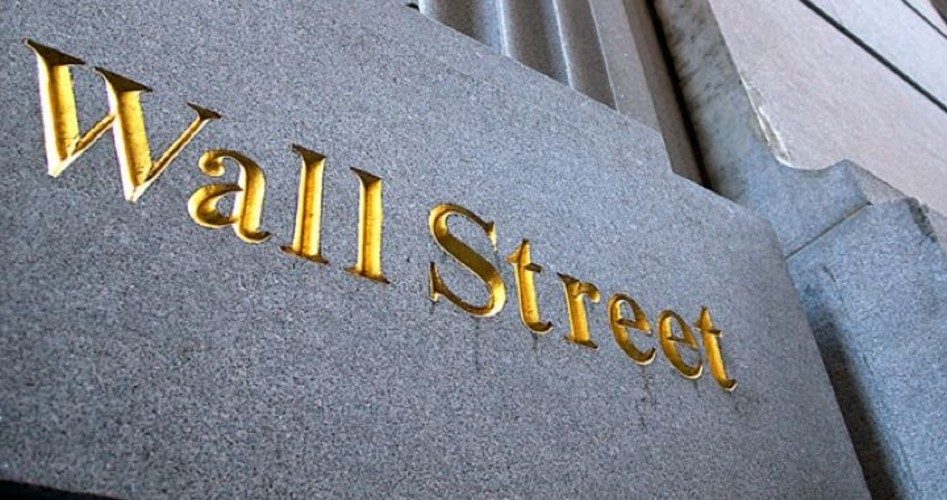
It was Jeremy Siegel, professor of finance at the Wharton School of Business and the seer who predicted that the Dow Jones Industrial Average would see 20,000 by the end of 2015, who got it right. The stock market’s recent fall, losing 1,000 points in two days earlier this week and almost 2,500 points since early October, was caused by Jerome Powell, the head of the Federal Reserve. During an interview on CNBC’s Closing Bell on Tuesday, Siegel said, “The market is saying that the pace [of the Fed’s interest rate hikes] is a little too fast.… The market is clearly worried about over-tightening [by] the Fed.”
The decline can be traced to remarks by Powell in early October that the Fed was “a long way” from “neutral” — that happy place where the economy is neither being artificially boosted by Fed policy, nor being dampened by it.
The New American noted on Monday that this “neutral” happy place is merely a figment of Powell’s imagination, buttressed by the opinions of others on the Fed’s Federal Open Market Committee (FOMC). During last Friday’s speech at the Fixed-Income Forum in Chicago, Powell let the cat out of the bag, telling reporters that “neutral” is a “vague” notion, that it’s based more on the opinion of the other FOMC members than any hard evidence that the economy needs adjusting.
Others are looking elsewhere for reasons for the market’s recent slide, but haven’t found it: the housing market’s topping; China trade issues; the forecast from Goldman Sachs that cuts U.S. GDP in half next year; the durable goods report showing a drop-off; jobless claims increasing; and the CFO survey released by CNBC that published the opinion of a number of financial officers who thought the Dow would see 23,000 long before it sees 27,000. Best of all there’s the “death cross” being exhibited by a number of high-tech companies that triggered automatic sell orders, orders being placed by algorithms used by money-management firms controlling billions.
Each of those reasons has little if any substance. The housing market just reported an increase (not a decrease) in existing home sales in October. The trade issues with China are going to be addressed by the president when he meets with leader of communist China later this month, with rumors persisting that the Chinese appear to be increasingly willing to negotiate with Trump. The report from Goldman Sachs, which forecasts a cut in GDP in late 2019 to half what it is currently, due to the fading impact of Trump’s tax reform law, fails on a number of fronts to account for the remarkable dynamics of the U.S. economy. The headline of the decline in durable goods failed to mention that most of the decline was in airplanes, both commercial and military, without which durable goods orders actually increased last month.
Unemployment claims jumped above forecasters’ expectations in October without the fact being mentioned that long-term unemployment dropped further to record lows. And the idea that CFOs would have any better opinion about the future direction of the stock market than other observers is laughable on its face. Besides, only 37 of the 121 members of CNBC’s Global CFO Council even bothered to respond to the survey.
And as far as the “death cross” (the crossing of a stock’s 50-day moving average below its 200-day moving average) triggering automatic sell orders is concerned, one question must be raised: Has the economic performance of any of those high-tech companies making up FAANG (Facebook, Amazon, Apple, Netflix, and Google) dropped by 20 percent in the last six weeks? Of course not. So most if not all of the market decline is technical in nature, not fundamental.
The health of the U.S. economy remains robust despite the naysayers looking for reasons for Wall Street’s volatility. Trump’s chief economic advisor and cheerleader for the administration, Larry Kudlow, told reporters at the White House that “corrections come and go,” adding, “I’m reading some the weirdest stuff [on] how a recession is in the future. [That’s] nonsense. Recession is so far in the distance I can’t see it. Keep the faith. It’s a very strong economy.”
And that economy will stay strong only as long as the Fed keeps its hands off. Unfortunately, that’s not going to happen. Goldman Sachs got that part of it right. In a note to clients, it said that “the FOMC will likely be reluctant to stop [raising interest rates] until it is confident that the unemployment rate is no longer on a downward trajectory, a point we expect to reach in early 2020.”
No longer on a downward trajectory? Say it right: The Fed is determined, in the opinion of the insider Goldman Sachs investment banking firm, to keep raising rates until the economy is so weak that unemployment starts to increase!
That’s the underlying cause of Wall Street’s unrest: the determination by the Fed to slow the economy with higher interest rates to such an extent that it enters a recession and people are being laid off from their jobs.
An Ivy League graduate and former investment advisor, Bob is a regular contributor to The New American magazine and blogs frequently at LightFromTheRight.com, primarily on economics and politics. He can be reached at [email protected].
Related article:



